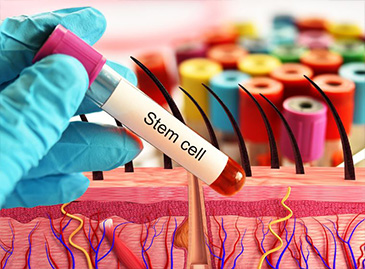
Large Kidney Stones (PNL): Causes, Symptoms, Effective
Large kidney stone removal is a life-saving procedure to remove solid pebble-like materials in the kidneys and lower urinary tract. Medical professionals who have spent almost a decade perfecting their skills and knowledge can carry out this procedure.
The Kidney is a bean-shaped organ at the back of your abdomen. Your abdomen is the space below your chest (what people call the stomach) just before your genitals. The bean-shaped organs (right and left) are vital for daily body function. Even though you can live successfully with one Kidney, you should properly care for your two kidneys.
What is the function of the Kidney?
The Kidney receives about twenty-five per cent (25%) of the heart's blood pumps. This blood that goes to the Kidney is the source of the urine we excrete daily. The Kidney performs other specific functions apart from urine production. Urine contains some toxic wastes, drug metabolites, and inorganic compounds that should not stay inside the body. Here, the Kidney acts as a cleansing system for the body.
In addition, the kidneys maintain and keep the blood pressure in check. Blood pressure can fluctuate because of illnesses and stressful activities. Through some unique processes, the Kidney keeps the blood pressure under control. It is also heavily involved in ensuring enough red blood cells/erythrocytes. The red blood cells carry oxygen from the lungs to other organs to ensure they are alive and functioning.
The specialized structure of the Kidney also makes it produce enzymes that control everyday processes. Since it excretes urine, it maintains the amount of fluid inside the body. This prevents cells from shrinking or swelling and helps them live longer.
The ultrastructure of the Kidney also grants it the ability to keep or excrete ions in the body. These ions are responsible for muscle movement, normal heartbeats, and bone and mineral formation. Retaining or passing these ions in excess or reduced concentrations is the Kidney function. However, we should protect it at all costs because of its immense contribution to everyday life. Without good kidneys, organs like the brain, heart, lungs, and liver cannot function maximally.
What are kidney stones?
Generally, Kidney stones are deposits of minerals and salts in concentrated urine. Stones are normal urine constituents that suddenly become solid pebble-like materials in concentrated urine. These stones are complex and can be painful during urination. However, they can form in one or both kidneys.
In addition, urine formed by the Kidney has an average proportion of fluids to crystal (stone) forming substances. If this proportion is not disturbed, no stone is formed. However, stones are formed when the crystal-forming substances are more than the fluid in concentrated urine. These crystal-forming substances stick together to form solid stones as time passes.
What are the types of Kidney stones?
There are about four types of kidney stones. This classification is based on what the rocks contain. They include:
- Calcium stones: Generally, Kidney stones are calcium stones. Most calcium stones are in the form of calcium oxalate. Oxalate is made from our everyday food. It is then processed by the liver or absorbed from our food. It enters the bloodstream and goes to the Kidney, where it can form stones. Calcium stones can also evolve in the form of calcium Phosphate. These stones are primarily found in people who have a metabolic condition known as renal tubular acidosis. Some medications that help treat seizures and migraine can also cause the formation of calcium phosphate stones.
- Struvite stones form about ten (10) to fifteen (15) per cent of kidney stones. Struvite stones contain magnesium ammonium phosphate. They usually start when someone has a urinary tract infection (UTI). They increase, are very big, and may cause severe damage to the kidneys.
- Uric acid stones: These rocks form in people with a lot of uric acid in their blood. Uric acids form from high-protein foods and metabolic diseases like diabetes. Small uric stones can be passed in the urine without difficulty, but large rocks cause blood to appear in the urine.
- Cystine stones: This is a rare form of kidney stone. Generally, they occur in a rare hereditary disorder called cystinuria. Cystine leaks into the urine in this condition and causes an accumulation of cystine in the urine. Cystine solidifies and becomes a stone.
What are the causes of kidney stones?
Kidney stones don't have a single definite cause. However, a lot of factors predispose people to kidney stones. Some of them include:
- Family or Personal history: If someone in your family has hhashasney stones, there's a high chance you'd also have kidney stones. If you also had kidney stones in one Kidney, you're likely to have a tone in the second Kidney.
- Dehydration: Not drinking enough water is a risk factor for developing kidney stones. When urine fluid (from water) reduces and the concentration of substances in the urine increases, stones may form. People who live in dry climates and sweat a lot have a high risk of developing kidney stones.
- Diets and food types: People who eat many high-protein foods and take a lot of salt are likelier to have kidney stones. Proteins increase uric acid levels in the blood and urine, while salts increase the amount of calcium in the Kidney.
- Obesity: High Body Mass Index (BMI), weight gain, and increased waist circumference have been linked to developing kidney stones.
- Medical conditions: Some medical conditions are closely linked to developing kidney stones. Gout, Urinary Tract Infections (UTIs), high blood pressure, and kidney disease are a considerable risk of developing large kidney stones.
Other risk factors include diuretics, calcium-containing antacids, chronic diarrhoea, a sedentary lifestyle, and physical inactivity.
What are the symptoms of Large Kidney Stones?
Kidney stones come with some painful and scary symptoms that tell you it's time to see the doctor. Some of those symptoms are:
- A feeling of flank pain – may be at the sides and back of the abdomen underneath your ribs.
- Radiating pain to your lower abdomen and groin: the stones might slip into the ureters that carry urine from the kidneys to the bladders.
- You may experience pain or a burning sensation during urination.
- Brown or red-coloured urine – this colour is sometimes a result of blood in the urine.
- Cloudy or foul-smelling urine.
- Nausea and vomiting.
- Fever, chills, and rigour if an infection is present.
You should see a doctor immediately if the pain becomes severe and affects your daily activities. However, visiting your doctor is essential if you see blood in your urine.
How can doctors remove large kidney stones?
Generally, there are three ways of removing large kidney stones:
- Shockwave lithotripsy
- Ureteroscopy
- Percutaneous nephrolithotomy
Shockwave Lithotripsy
This method involves using high-frequency sound waves (ultrasound) to pinpoint the exact location of the stones in your Kidney. When the stone site is identified, shockwaves are sent to the stone from a machine. These shockwaves will break the rocks into small pieces that can be excreted in the urine. Although this method is ineffective, you may need more than one session. Shockwave lithotripsy is uncomfortable and is done after taking pain-killing medications (analgesics).
Ureteroscopy
Ureteroscopy involves passing a long telescope tube into your urethra ( the tube that carries urine outside the bladder). The long tube goes to the ureter that connects the Kidney to the bladder. Furthermore, the surgeon uses laser energy to break the stones into smaller pieces to be excreted into the urine. Your physician will carry out this procedure under general anaesthesia.
Percutaneous Nephrolithotomy
Furthermore, your doctor will make a small incision on your back just below your ribs, where your kidneys are. They will use a nephroscope (a small telescopic instrument) to locate the stone. Once they note the site, they pull the stone out or break it into smaller pieces using laser energy. Doctors often carry out Percutaneous Nephrolithotomy under general anaesthesia (where the patient sleeps completely).
What are the complications and side effects of removing large kidney stones?
The surgery to remove a large kidney stone can have some side effects, even if your surgeon goes by the textbooks and is an expert. The complications may differ depending on the type of surgery. The complications include:
- Sepsis is a systemic infection that spreads through the blood to the body system and damages some specific organs.
- Injury to the ureter: the ureter can become injured and perforated during surgery.
- Urinary Tract Infection: Infections may get into the urinary tract during the surgery, affecting the patient's urination.
- Bleeding: The patient is prone to bleeding during the surgery.
- Pain
Your doctor should discuss these complications with you before surgery.
Conclusion
Lastly, Kidney stones have different sizes, from small pea-sized to five inches (5 inches) large kidney stones. Large kidney stones are difficult to pass in the urine. Diets and food products play a lot of roles in developing kidney stones. However, lifestyle modification may help prevent the development of large kidney stones.
Organ Transplantation Price Turkey



